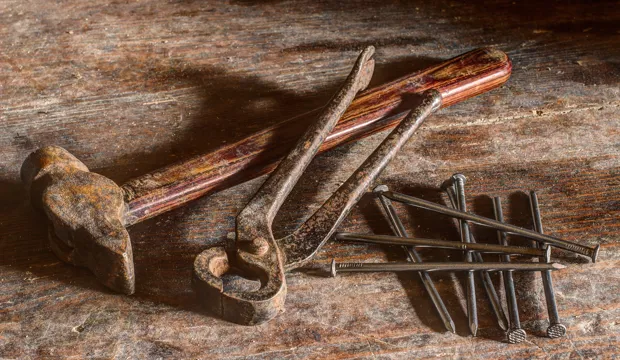
Marshmallow catapult
How to make a catapult and fire marshmallows
In this fun activity for kids, students will construct a miniature catapult capable of firing a marshmallow! This exercise will allow students to develop practical skills using a saw and a glue gun and their communication skills as they work as part of a team.
Activity: Marshmallow catapult
This activity could be used in Key Stage 2 as a straightforward design and technology project. It could also be integrated with history and drama; for example, pupils could act out a short script following the development of the catapult. One group of pupils could be villagers based in a hill fort. Other groups could represent different invaders through the ages, armed with different types of catapults (such as small Viking catapults, mangonels, onagers, trebuchets, couillards etc.). The group representing the invaders could describe their devices and capabilities and invade the village. In addition to the history and development of catapults (which can be found on many websites, including Wikipedia), this allows the opportunity for era-appropriate costumes!
How long will this activity take to complete?
This activity will take approximately 100-180 minutes to complete.
Tools/resources required
For the marshmallow holders
- Copies of the marshmallow catapults holder (handout) printed on card
- Scissors
- Glue sticks
For the catapult structures
- Square section softwood: 8 x 8 x 590 mm, 6 pieces per team plus spares
- Saws
- Vices, bench hooks, mitre boxes or similar devices to secure the wood when cutting
- Glue guns (one per team)
- 2 elastic bands per team (one small, one large) plus spares
For testing
- A bag of marshmallows
Optional
- Copies of the marshmallow catapults structures (handout) printed on paper
- Sandpaper
- Baseboards or A3/A4 pieces of cardboard for use as baseboards when using glue guns
The engineering context
Did you know that the word ‘engineer’ was initially used to describe people responsible for building siege weapons in ancient times? During the sieges of towns and castles, it was customary for skilled experts to construct catapults to breach defences and demoralise the defenders. Among the various catapult types, one was known as the ‘onager’, named after a wild donkey renowned for its fierce kick. The individuals responsible for building this particular catapult were referred to as ‘onager-neers’, a term that eventually evolved into engineers.
Catapults need to have a structure which is both strong and stiff. Otherwise, the forces they experience when used can cause them to break. A catapult made from square shapes can be made significantly more rigid and less likely to collapse by adding reinforcement to form triangles. The principle is still widely used in civil engineering for structures ranging from cranes to aircraft structures and the roofs of buildings.
Suggested learning outcomes
By the end of this activity, students will be able to understand that triangles can be used to reinforce structures, they will be able to safely operate a saw to cut wood, safely use a glue gun, and they will be able to design and make a structure.
Download the free Marshmallow catapult activity sheet below!
All activity sheets and supporting resources are free to download, and all the documents are fully editable so that you can tailor them to your students and your schools’ needs.
The activity sheet includes teacher notes, guidance, helpful web links, and links (where appropriate) to the national curriculum in each of the four devolved UK nations; England, Northern Ireland, Scotland and Wales.
Please share your classroom learning highlights with us @IETeducation.




